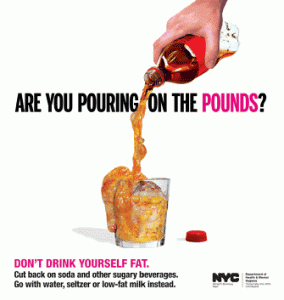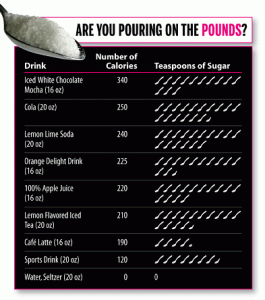I recently received this request from Daniel posted to Feedback:
Would you mind writing a blog post on the new surgeon general’s obesity report? …Is there a food politic element to why this has gone under the radar? …I find it ironic that Michael Pollan’s Food Rules generated substantially more press than a report by the United States Surgeon General.
I’m not surprised. Pollan’s book is a hot best seller (it’s #1 on Amazon books, and for good reason, in my opinion). The need to prevent obesity and how to do it is not exactly front-page news. And the new Surgeon General, Dr. Regina Benjamin, is still relatively unknown as a political force.
But let’s give Dr. Benjamin credit for taking on obesity in one of her first public actions: the release of “Vision for a Healthy and Fit Nation.” The Vision, which comes with a press release and a fact sheet, recommends these actions to prevent obesity:
- Reduce consumption of sodas and juices with added sugars.
- Reduce consumption of energy dense foods that primarily contain added sugars or solid fats.
- Eat more fruits, vegetables, whole grains, and lean proteins.
- Control your portions.
- Drink more water.
- Choose low-fat or non-fat dairy products.
- Limit television viewing time and consider keeping televisions out of children’s rooms.
- Become more physically active throughout the day.
- Breastfeed exclusively to 6 months.
These are all useful suggestions but we have heard them before. The real issue is how to achieve them. Here, the report disappoints.
The first two items should have grabbed attention: targeting soda reduction as as the first line of defense against obesity, and eating less junk food (my translation) as the second.
But Dr. Benjamin assigns parents the responsibility for feeding kids healthfully. Fine, but what about about public health approaches to reducing soda consumption? To pick a non-random example, soda taxes are under intense debate right now. Does Dr. Benjamin weigh in on such approaches? Alas, no. Only on the second-to-last page does she summarize suggestions from the Centers for Disease Control and Promotion (CDC), among them:
- Increase availability of healthy, affordable food and beverage choices in public service venues.
- Improve geographic availability of supermarkets in underserved areas.
- Improve access to fresh fruits and vegetables by providing incentives for the production, distribution, and procurement of foods from local farms.
- Limit advertisements of less-healthy foods and beverages.
I wish the report had focused on such ideas, instead of leaving them to an afterthought and personal responsibility. It’s great that the nation’s doctor cares about obesity but her Vision isn’t nearly as tough or realistic as it needs to be. For that, we need the CDC or the report on food marketing to kids that the Institute of Medicine produced in 2005.
In 2001, Surgeon General David Satcher released the first government report on preventing obesity. It got press. If this one didn’t, it could well be because it doesn’t break enough new ground. Surely, it’s high time we got beyond blaming parents and instead started focusing on the need to create a food environment that makes it easier for parents and everyone else to make better food choices and be more active.
I hear that Michelle Obama will soon announce (tomorrow?) a new program to address childhood obesity. I’m hoping that her program will take on some of the factors in the food environment that make it so difficult for everyone to eat healthfully.



